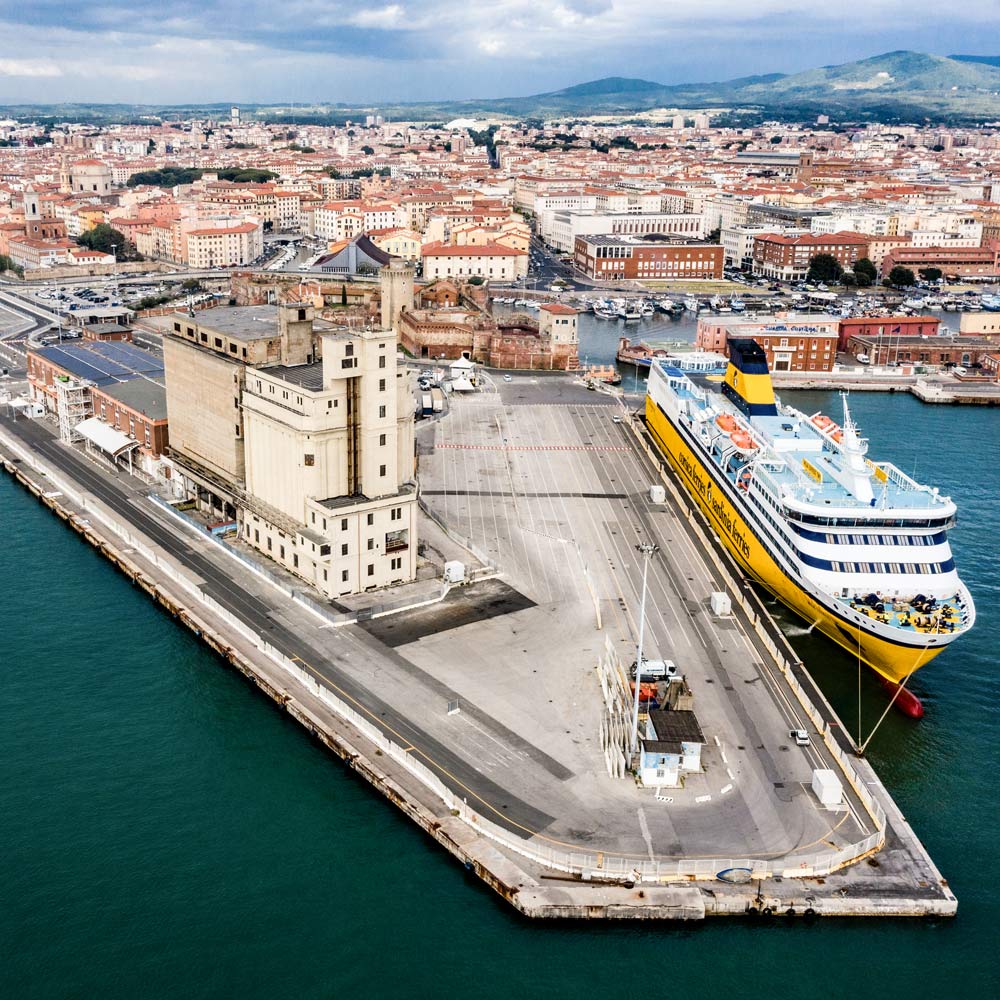The Port REnaissance
DOWNLOAD THE BROChURE
PORTS OF CALL
THE NORTH TYRRHENIAN
The North Tyrrhenian ports of call – Livorno, Piombino, Portoferraio, Rio Marina, Cavo and the island of Capraia – are one of the largest Italian port networks in terms of total traffic turnover (almost 45 million tonnes of goods and about 10 millionpassengerstransitannually). Thesixportsunderthe jurisdiction of the North Tyrrhenian Port Network Authority, which was set up after Legislative Decree No 169 of August 4th, 201, contribute 13% of Italian general cargo traffic (Ro-Ro, Containers and breakbulk ) and play a major role in the ro-ro traffic segment in terms of tonnes handled and the number of commercial vehicles. The port of Livorno is also a national leader in the forest product and new car traffic sectors.
The North Tyrrhenian Port Network Authority is located in theTyrrhenian-Ligurian (or North Tyrrhennian), port range, the most important in Italy in terms of total general cargo handlling volumes and as Tuscany’s natural logistics platform.
Its position near the rich markets of central and northern Italy is its greatest strength, while the opportunities provided by the TEN-T networks’ transeuropean links put the North Tyrrhenian node in an international dimension. The primary nodes of the network (such as the Port of Livorno and the Tuscan “A. Vespucci” freight village) are in fact located near the road and rail interconnections of the TEN-T Scandinavian-Mediterranean Corridor, along the Pisa-Florence axis, and are well integrated with the secondary nodes of the comprehensive network, such as the port of Piombino, Pisa’s G. Galilei airport and the Interporto della Toscana Centrale freight village in Prato.
Hence the North Tyrrhenian Port Network has a two-fold market reference point. On the one hand, the European hinterland with the core markets of continental Europe, from the north-east of Italy to the central European manufacturing regions. On the other hand, the strictly Euro-Mediterranean dimension, with its links to the main islands and the countries on the southern banks of the Mediterranean.
The North Tyrrhenian Network ports are also the natural gateway for tourists visiting Tuscany with its art cities (Florence, Pisa, Lucca, Siena, San Gimignano etc), unspoilt nature, and beaches looking out onto a sea which is part of the Pelagos Sanctuary protecting the marine mammals living there.
The islands of Capraia and Elba are included in the ‘Natura 2000’ network as an important Community site, according totheCEE92/43‘Habitat’Directive. More recently, they have also become part of the Arcipelago Toscano National Park (established in 1996 by a decree issued by the President of the Republic), with its 5 islands: Gorgona, Pianosa, Montecristo, Giglio and Giannutri. Together these islands are known as the ‘Seven Pearls of the Tuscan Archipelago’ and with their 60,000 hectare sea area, is the largest marine park in Europe.
TUSCANY.
A NEVER-ENDING RENAISSANCE
The Covid-19 pandemic has led to a turbulent trend in the economy that has heavily impacted not only international shipping, but also port and logistics activities.
However, “ports do not stop”, as the first slogan Assoporti (the Italian Port Association) adopted in March 2020 and taken on by the North Tyrrhenian Port Network Authority goes, combining it with the other launched by Tuscany Regional Administration.
– “Tuscany a never-ending renaissance” which is the leitmotif of the campaign to promote the regional area, its resources, and its values, with the Tuscan port cities as the natural gateways from the sea, launched in April 2020.
The North Tyrrhenian Port Network Authority has become the promoter of this regional campaign and of the more general response of the Italian ports, articulating the key points according to its institutional role, with particular regard to the port areas under its jurisdiction.

SIMPLIFIED LOGISTICS ZONE (SLZ)
For Livorno and Piombino, the establishment of the Tuscany SLZ
(approved under Law no. 205 of December 27, 2017, and subsequent amendments and additions) is in line with the policies on sustainable and competitive development and infrastructure qualification in favor of logistics and mobility defined in the key planning documents.
In order to develop the logistic vocation of the Tuscan coast’s port and port hinterland areas, the SLZ is designed to enhance the integration of the main port hubs, firstly with Pisa’s G. Galilei airport and the Tuscan A. Vespucci freight village and, secondly, with the logistics branch of the central metropolitan system, represented by the Prato freight village.
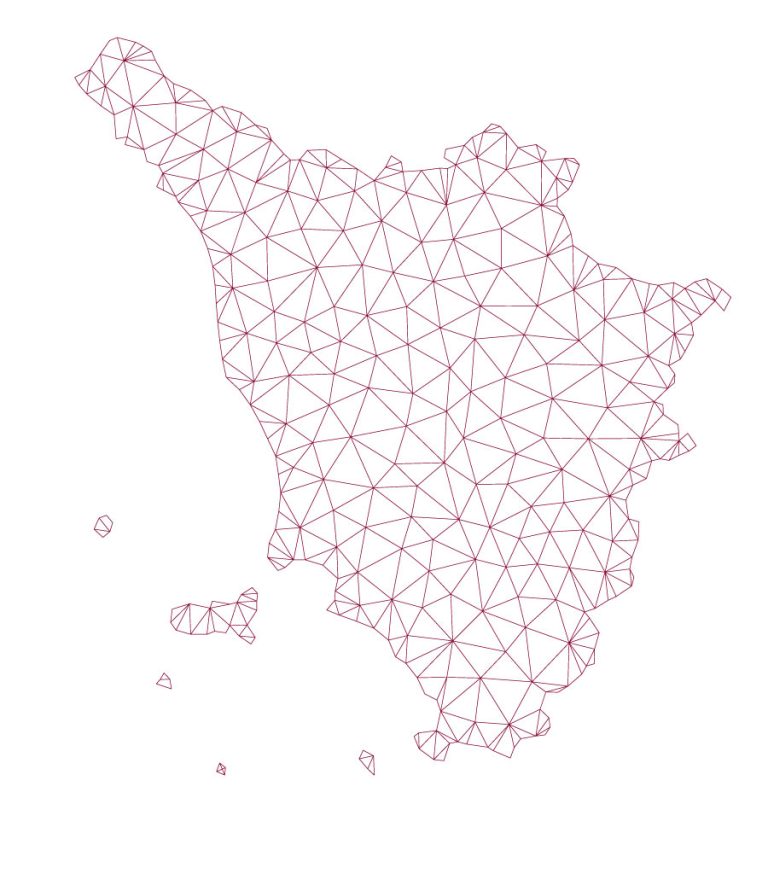
From a strategic perspective, a polycentric SLZ structure will be set up designed to involve and functionally integrate, starting with the Livorno and Piombino port areas, the other main regional logistic infrastructures such as the A. Vespucci freight village and the G. Galilei airport as proximity nodes, as well as the Interporto della Toscana Centrale freight village in Prato as a modal connection node.
The ports of Livorno and Piombino will therefore take on a key role in the main objective of the SLZ; attracting new industrial activities and encouraging the development of existing port and logistics companies. The aim is to strengthen and improve the efficiency of the Tuscan logistics and intermodal system through the development of the modal corridors connecting the coast with Central Tuscany.
Traffic
A multi-purpose port system
The port of Livorno has been internationally renowned as a major port for container traffic since the 1980s.
Darsena Toscana Terminal, the port’s most important container terminal, handles over 65% of the total container throughput in Livorno every year.
It offers a surface area of approximately 400,000 square meters, 1.5 km of quays, a railway terminal and reefer outlets, a Border Control Post area- an inspection area, light towers, 7 new-generation container cranes, 14 bridge cranes and a wide range of lifting equipment.
Containers are also handled in other areas of the port, such as Lorenzini Terminal. This terminal offers about 90,000 square meters of yard space, reefer outlets, mobile harbour cranes and handling vehicles, a container rag press, a Border Control Post and inspection areas also at the Porto Commerciale Terminal.
As the leading Italian port of call for forest products, mostly going to the Tuscan and national paper industries, every year Livorno handles over 1.6 million tonnes of forest products (pulp, rolls and kraft paper, timber), just in terms of break-bulk.
The main terminals specialized in handling this type of traffic are the Compagnia Impresa Lavoratori Portuali – CILP Terminal, MarterNeri terminal, the Tozzi terminal and the F.lli Bartoli terminal. Some forest products are also handled in the area where Silos & Magazzini del Tirreno Terminal is located.
hanks to the large port and port-hinterland areas available for this type of goods, Livorno is one of the most important ports for international manufacturers, receivers and shipowners.
Over 600,000 new cars transit through the port every year: 80% are handled at disembarkation and are unloaded and transferred to the large parking areas available in various operational zones inside and outside the port.
Many cars are taken to the A. Vespucci freight village or the Faldo vehicle storage facility, where ancillary operations are also carried out for putting the vehicles on the market.
Built and developed as a multipurpose port, Livorno offers port areas, warehouses and modern handling equipment as well as top professionals for loading and unloading a vast range of goods.
Piombino port’s vocation is instead closely connected to the industrial sector, especially the steel industry, which is mainly located in the northern area of the port, used for handling traffic to and from steel companies, which takes place at the former ILVA wharf.
The port of Livorno has temperature-controlled warehouses and a large number of facilities with electrical outlets for cold chain products. Livorno Reefer terminal has a large, modern 11.000 sqm warehouse equipped with cutting-edge equipment.
At full capacity, the facility can handle over 300,000 tonnes of fresh and refrigerated goods. At the Tuscan “A. Vespucci” Freight Village an innovative facility is under construction from a plant engineering point of view, dedicated to the handling of frozen products arriving in the port of Livorno.
There are also cold storage units which are already operational, some inside the customs area, for fresh fruit coming into the port, destined for large-scale retail outlets throughout central Italy.
Livorno is one of the most important Italian ports for Ro-Ro and Ro-Pax traffic and a leading port for Motorways of the Sea and Short Sea Shipping.
Ro-Ro cargo represents Livorno port’s main traffic, as it accounts for over 43% of the total traffic. The main terminals in the Motorways of the Sea sector are LTM, PL 2000, Sintermar, SDT, CILP. The total ro-ro traffic, trucks and semi-trailers, exceeds 500,000 vehicles, over 5.5 million linear meters.
Direct lines, many of which running several times a day, to Sardinia (Olbia, Golfo Aranci and Cagliari), Sicily (Palermo and Catania), Capraia, Corsica (Bastia), Spain (Barcelona and Valencia) and Tunisia are operated by the main shipowners in the sector: Moby, Grimaldi Group Naples, Tirrenia-CIN, Corsica and Sardina Ferries, COTUNAV and TOREMAR.
Ro-Ro and Ro-Pax is also a top traffic segment for Piombino. The port is a key link not only for the islands in the Tuscan Archipelago, but also for other major Mediterranean islands (Sardinia and Corsica).
The leg from Piombino to the islands is a safe route to ensure territorial continuity and the constant supply of goods transported on trucks and semi-trailers.
Livorno è uno dei più importanti porti italiani per i traffici Ro-Ro e Ro-Pax e si conferma come scalo primario per le Autostrade del Mare e lo Short Sea Shipping.
Le merci su rotabili rappresentano il principale traffico dello scalo labronico con un peso percentuale, sulla totalità del traffico, che supera il 43%. Principali terminal del settore delle Autostrade del Mare sono LTM, PL 2000, Sintermar, SDT, CILP. Il traffico totale dei mezzi rotabili, guidati e non, supera i 500.000 mezzi, per oltre 5,5 milioni di metri lineari.
Linee dirette, molte delle quali plurigiornaliere, per la Sardegna (Olbia, Golfo Aranci e Cagliari), la Sicilia (Palermo e Catania), Capraia, la Corsica (Bastia), la Spagna (Barcellona e Valencia) e la Tunisia sono operate dai principali armatori del settore: Moby, Grimaldi Group Napoli, Tirrenia-CIN, Corsica e Sardina Ferries, COTUNAV e TOREMAR.
Il segmento Ro-Ro e Ro-Pax occupa una posizione primaria anche per i traffici del porto di Piombino, fondamentale interfaccia per le isole dell’Arcipelago Toscano, ma anche per altre maggiori isole del Mediterraneo (Sardegna e Corsica).
La rotta da Piombino verso le isole costituisce un percorso sicuro per garantire la continuità territoriale e il costante approvvigionamento delle merci trasportate su semirimorchi e camion.
Livorno is also a top port in the passenger sector at national and international level, both for ferry traffic to and from the islands (Sardinia, Corsica, Sicily and Capraia), and as a port of transit for the world’s leading cruise lines.
Porto di Livorno 2000 is the company that manages the passenger terminals: two terminals are located near the historical Porto Mediceo (Porto Mediceo Cruise and Ferry Terminals) and one at Calata Alto Fondale (Alto Fondale Cruise Terminal). Ro- Pax traffic is also developing in other areas of the port (Sintermar Darsena Toscana-SDT and Livorno Terminal Marittimo-LTM).
Each year, almost 3.5 million passengers pass through the port of Livorno, including over 800,000 cruise passengers.
t Piombino, passenger traffic is traditionally linked to the ferry sector (connections with Elba, Corsica and Sardinia). The port is equipped with a modern ferry terminal.
The traditional ferry passenger segment has, over time, been supplemented by cruise traffic, which has recently expanded considerably, both in Piombino and in Portoferraio, Elba Island’s main port. Every year about 6 million passengers, including 50,000 cruise passengers, pass through Piombino and the ports on the Island of Elba (Portoferraio, Rio Marina and Cavo) managed by the North Tyrrhenian Port Network Authority.
The port on Capraia island is only used for passenger traffic and supplies from the port of Livorno.

TRAFFIC
A MULTI-PURPOSE PORT SYSTEMTHE LOGISTIC PLATFORM
FOR CENTRAL AND NORTHERN ITALY
The Vespucci freight village and the Faldo vehicle storage facility play a crucial role in decongesting port areas.
Together they have an enormous potential and represent an ideal logistics hub for Italian and world markets.
In the heart of the Mediterranean, only 6 km from the Port of Livorno, and at the centre of an infrastructural system that connects Tuscany to Europe, the Amerigo Vespucci Freight Village extends over an area of 3 million square metres dedicated to the development of trade in Tuscany and Central Italy.
The strategic position of the freight village, and its highly rationalised system for the transport and handling of containers and trailers make it essential both for the decongestion of port areas, and as a logistics hub.
Equipped with 120,000 square metres of specialized covered warehouses and a 130,000 m2 railway terminal, the Vespucci Freight Village is the fulcrum of the Tuscan coastal logistics platform: thanks to connections with the principal national and international road and railway networks, it enjoys a central position in relation to Italy’s main industrial centres, close also to the Tuscan tanning, paper, stone, chemical and agri-food districts.
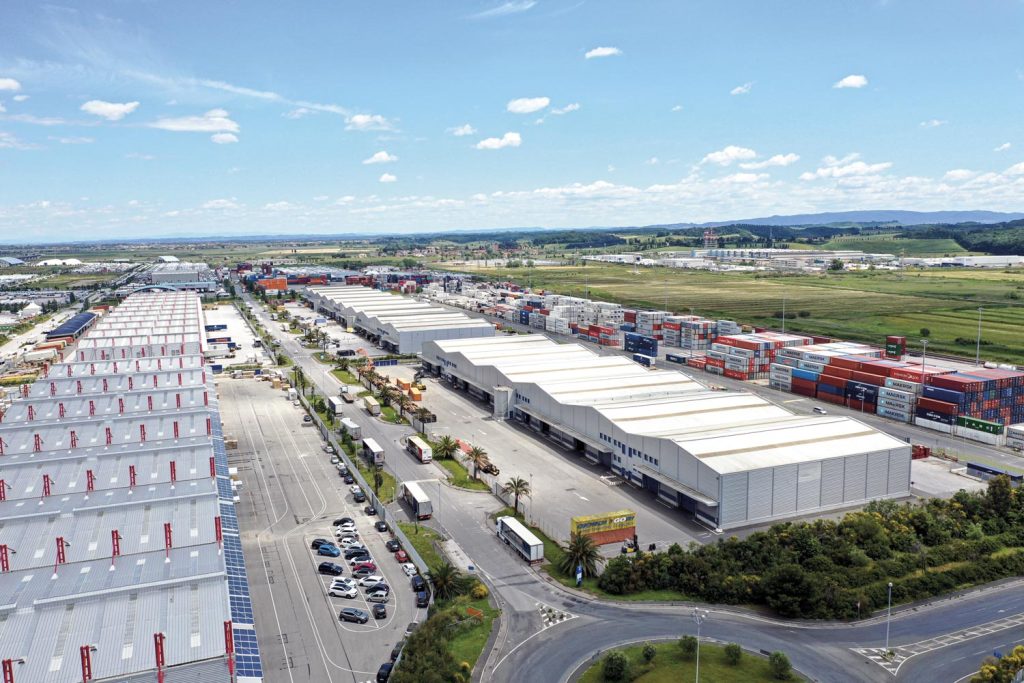
Increasingly focusing on the development of logistics services and the strengthening of its role as an inland port/intermodal hub, the Vespucci Freight Village is in the process of implementing a series of promising actions to meet the main challenges posed by the coming decades, from sustainable transport to the development of intermodality and the enhancement of cold chain facilities:
- the expansion and upgrading of the railway terminal with greater RFI (Italian railways) involvement;
- a new cold storage system for frozen goods to be installed as part of a “Cold Village” to service port traffic; • a modern Truck Village to service RO-RO traffic;
- increased intermodality, with a new service for the routing of semi-trailers by rail (T.O.R. project);
- a major project for the environmental certification of the Vespucci Freight Village;
- development of the company’s business potential with the creation of a services and maintenance company;
- important investments to boost growth in energy production and to enhance the role as Other Closed
Distribution System undertaken by the Company; - further development of water production in order to make the site self-sufficient;
- a project for the development of a pharmaceutical district (Toscana Pharma Valley).
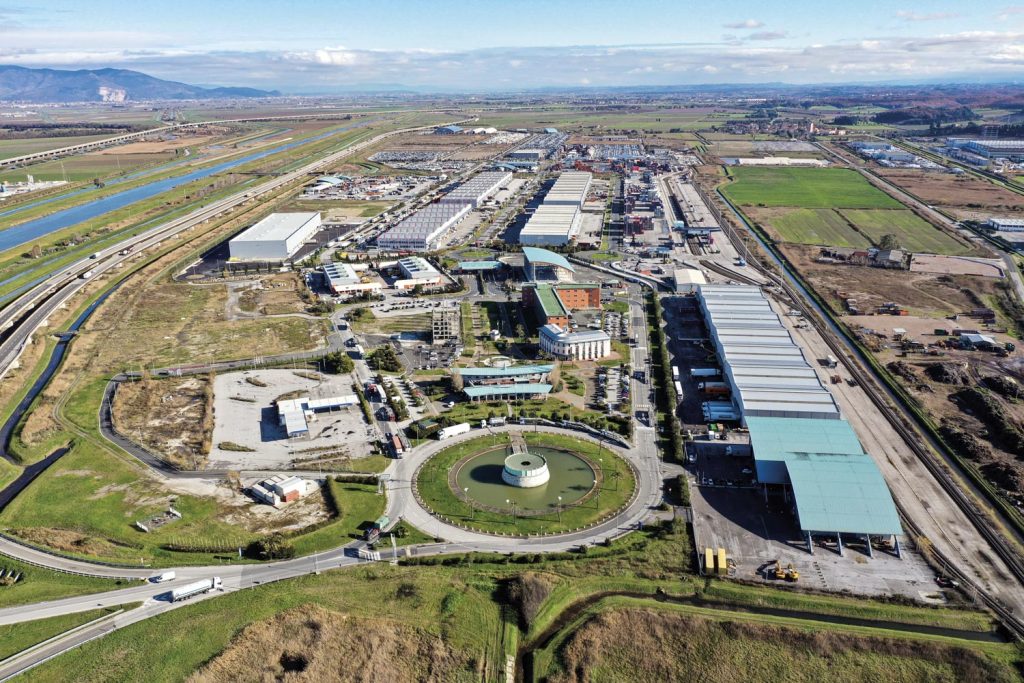
The Faldo vehicle storage facility also occupies a strategic position between the port (9km away) and the hinterland and represents a growing force in the shipping of new cars. Autotrade & Logistics, the company that manages it, provides management excellence in the field of automotive logistics and, attentive to environmental issues, is a catalyst in the transition towards sustainable mobility.
The vehicle storage facility can accomodate over 32,000 units which can be loaded and unloaded smoothly and in total safety thanks to quays connected with the port hinterland.
Vehicles can also be transported from car factories directly to the the vehicle storage facility by other means of transport (road and rail). In addition to enjoying a logistically privileged position close to transport routes, Faldo has the advantage of being located inland, away from the potential risks of salt air, sandstorms and industrial pollution from the port.
The entire parking area is built over a transitable cavity that guarantees water drainage and therefore ensures that vehicles can be parked on a dry, well- drained surface. The facility is also equipped with an internal connection that allows the positioning of two block trains.
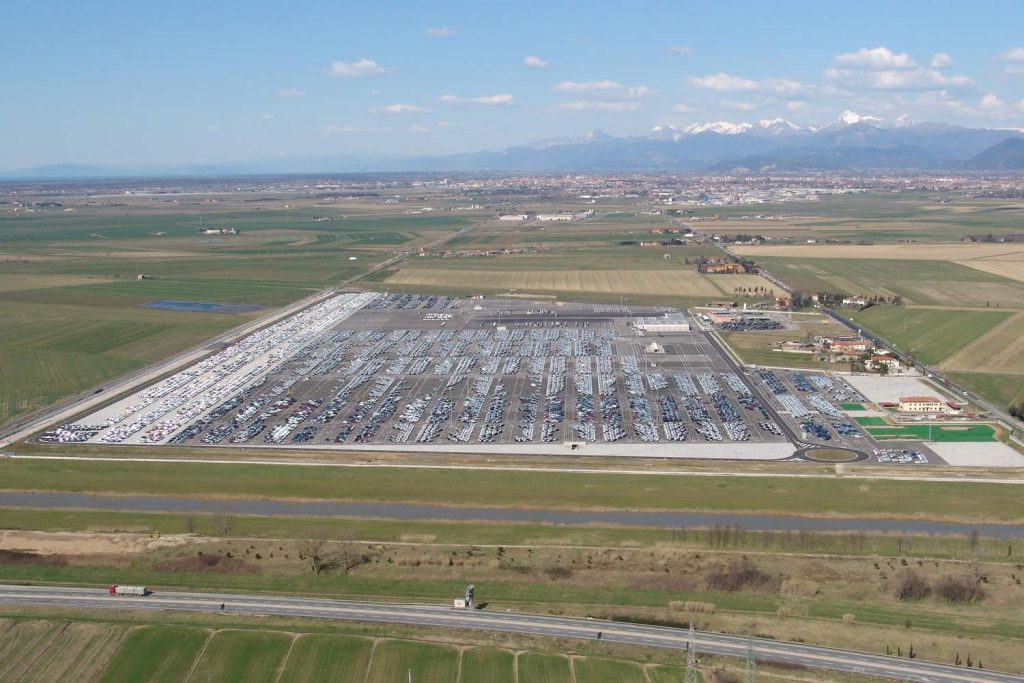
THE PORT/CITY INTERFACE
WE WORK EVERY DAY FOR A NEW REINASSANCE
OPEN PORT
Thanks to The OPEN PORT project which began in 2007, the ports under the North Tyrrhenian Port Network Authority’s jurisdiction have opened themselves up to visitors revealing their innermost secrets: the inaccessible areas, key port figures, the mechanisms that regulate them and also the characteristic language and lifestyles which have entered into the fabric of the city and its port hinterland areas.
With guided tours, literary competitions, television talk shows, cultural and leisure events for local people, OPEN PORT seeks to entertain and involve its local citizens and tourists, bringing them physically and culturally closer to the port.
If the OPEN PORT initiative, together with other initiatives by other Italian Port Network Authorities, represents one of the now historic projects for promoting the link between the port and the city, Assoporti, the Italian Port Association, which the North Tyrrhenian Port Network Authority is a member of, has set up a joint initiative to further connect Italian ports with their surrounding regional areas by
adopting a single logo and slogan, Italian Port Days. OPEN PORT is part of it every year with its program of ad hoc events.
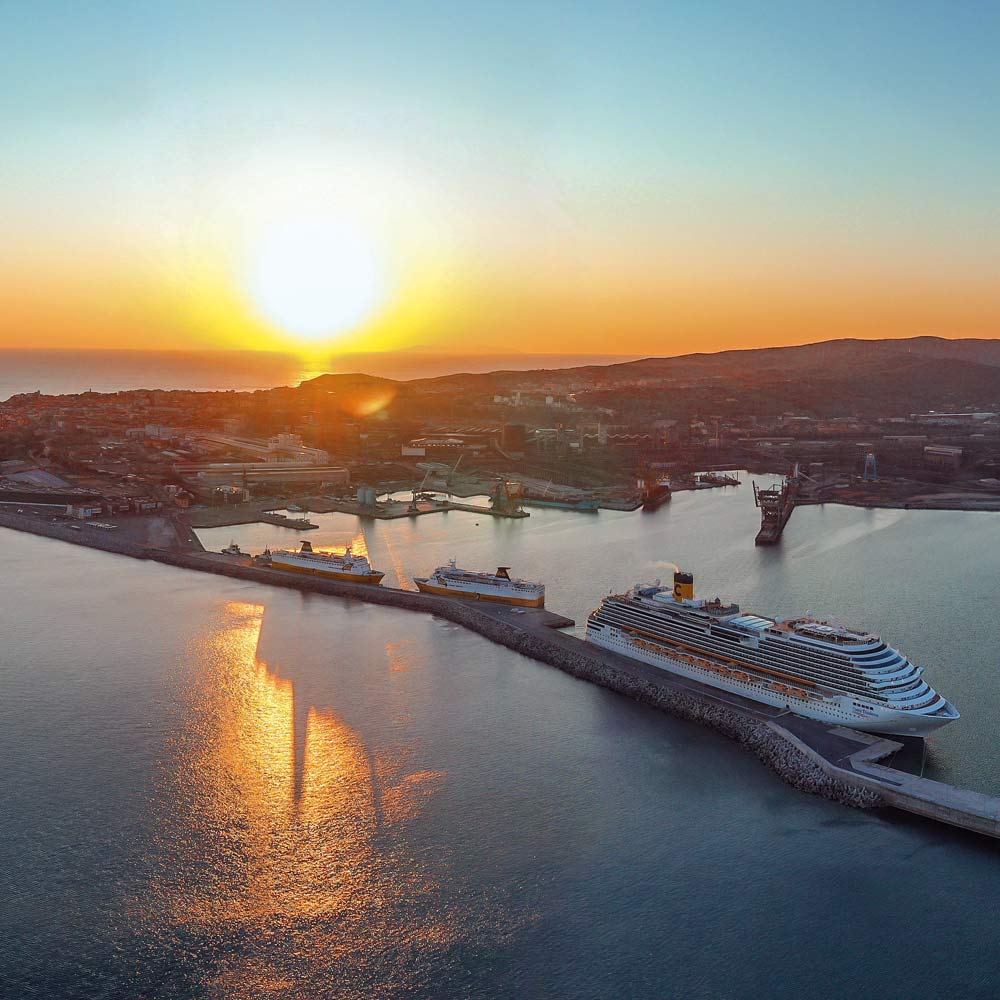
LIVORNO PORT CENTRE AND THE NORTH TYRRHENIAN PORT CENTRE NETWORK
The Livorno Port Center, opened in 2015, is a facility designed as a place where local citizens and experts in the port and logistics industry can meet. It is located in the Palazzina del Capitano, inside Livorno’s Old Fortress, in Livorno port’s passenger terminal area.
Livorno Port Center has an educational mission. It is, above all, a place for exchange and debate with the local urban community, first of all with school students. As well as hosting daily school groups visiting the multimedia exhibition center and the former FS Warehouse that houses the Historic Vessel Exhibition, the facility, in agreement with local higher education institutes, welcomes groups of students taking part in work experience programmes.
Livorno Port Center also carries out international networking activities as part of the Port Center Network, a cross-border cooperation network and has signed the “Charter of Missions of a Port Center”, devised by AIVP (Association Internationale Villes et Ports). The Charter defines a framework of clearly identified common missions, on the basis of which each Port Center develops its own activity program according to each port city’s heritage and socio-economic context. The success of this facility has prompted the North Tyrrhenian Port Network Authority to devise projects for a Port Center in Piombino and a North Tyrrhenian Port Center network.
After Piombino, a Port Center is also due to be set up in Portoferraio.
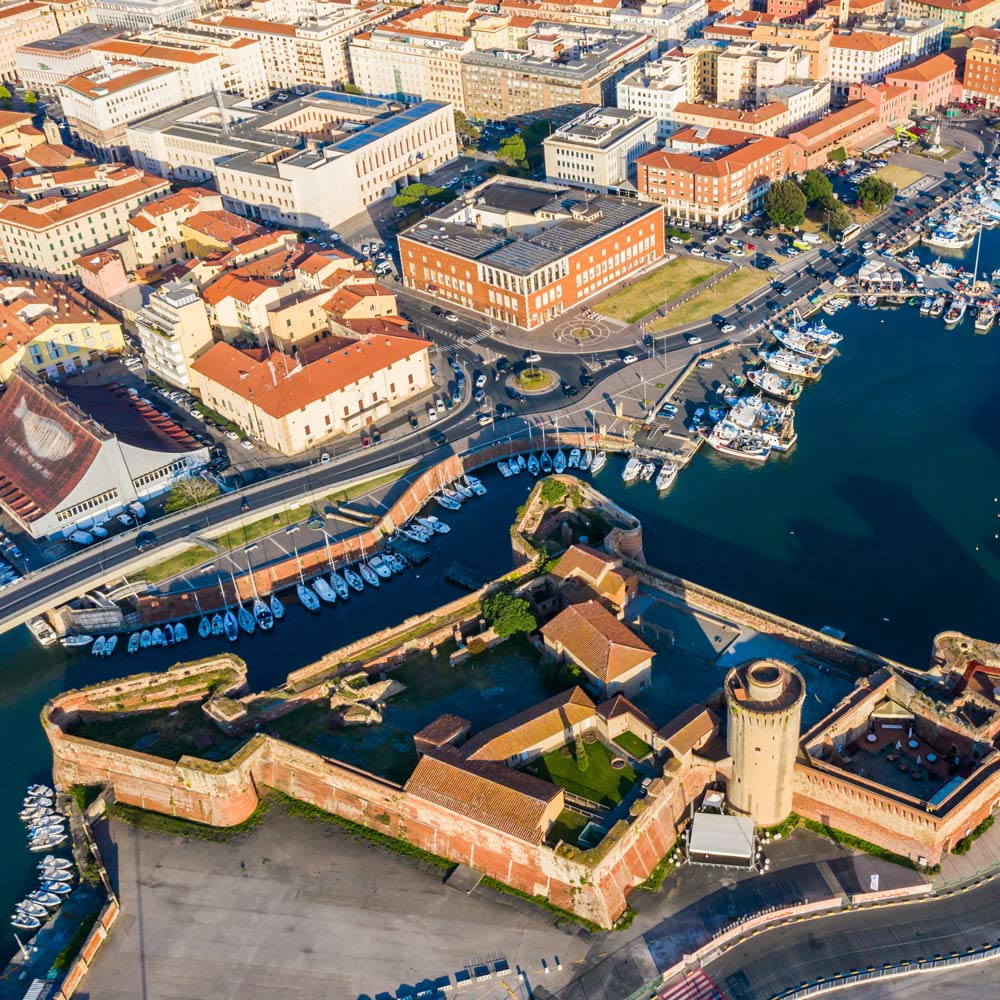
LIVORNO’S OLD FORTRESS
The North Tyrrhenian Port Network Authority has been managing the Old Fortress since August 1st, 2013 by virtue of the temporary concessions signed with its owners, the State Property Agency and the Chamber of Commerce; something that the main local, territorial and regional political- economic actors had been welcoming for some time. The initial concession has been extended until February 2024.
Thanks to routine maintenance interventions, safety measures, renovation, recovery, and restoration work, the Fortress, Livorno’s most important historical example of engineering and architecture, has been made accessible and can finally be visited free of charge six days a week. Areas that had been abandoned until now have been brought back to life: the “Ferretti” room, courtyards, squares and the paths along its bastions.
The North Tyrrhenian Port Network Authority also sponsors a constantly developing cultural program, hosting dozens of events. The aim is to contribute to safeguarding the historical- architectural heritage of the waterfront and, in general, of the city landscape, rightly defined as urban and port, making the monument a landmark for local area. From this perspective, the Old Fortress represents an asset of a local regional policy designed to attract and develop passenger both cruise and ferry passenger traffic.
The Fortress is located on a site between the city and the port; as well as being a reference point for the city due to its proximity to the city centre, it also represents a central feature of the port environment, a natural access gateway to the city from the passenger terminal area, and the focus of a series of projects to enhance the waterfront, in agreement with guidelines laid down by the ESPO, the Villes et Ports International Association (AIVP) and the Italian ports association, Assoporti. The North Tyrrhenian Port Network Authority, in collaboration with the company that manages the cruise terminal, Porto di Livorno 2000, has organized events and initiatives for cruise passengers together with many prestigious cruise shipowning groups such as MSC, Azamara, Viking, Seabourn and others.
